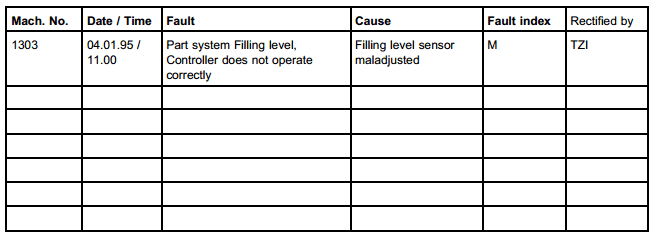Fault finding
Picture 1: Acquisition of actual status
The actual fault finding starts once the actual status has been established and compared with the required status. This comparison frequently leads to the discovery of the error source, if the fault is:
>> visible (e.g. mechanical damage to a signal generator);
>> audible (e.g. leakage on a valve);
>> detectable by smell (e.g. cable burnt out).
If this is not the case, the fault can only be found and eliminated by means of a systematic procedure.
Systematic fault finding
Again, the required/actual status comparison forms the basis for systematic fault finding (Picture 2).
Picture 2: Systematic fault finding
Fault documentation
Once a fault has been found, it is not sufficient just to rectify this, but at the same time the cause of the problem should be determined. A useful tool for this is a faults list, which should be kept with the installation. This list describes the malfunctions and their causes. It may take a number of different forms.
The following is an example (Picture 3).
Picture 3: Fault documentation table - example
This list can be useful in detecting frequently recurring faults and their causes. The fault index makes it easier to establish the nature of the error:
A = Incorrect working practice (e.g. a retaining screw is not properly tightened on an assembly part);
M = Mechanical fault (e.g. sensors are maladjusted);
E = Electrical fault (e.g. relay is not energised or solenoid does not switch);
S = Controller error (e.g. program or program part is not activated);
L = Leakage fault (e.g. water escaping from threaded connection);
B = Operator error (e.g. shut-off valve not closed);
W = Service error (e.g. filter not cleaned).
Fault analysis
With the help of the faults list, it is possible to establish whether a fault or damage occurred and thus to pinpoint weak points in the system. Once these have been identified, it is advisable to introduce technical improvements. If damage has occurred, the following procedure should be adopted (Picture 4):
Picture 4: Fault analysis procedure
Final analysis
Fault finding and elimination means not just to render the system operational again, but also to identify and improve weak areas in the system.
The basic prerequisite for this is a knowledge of all control technology aspects and understanding of the function and interaction of hybrid systems.




No comments:
Post a Comment